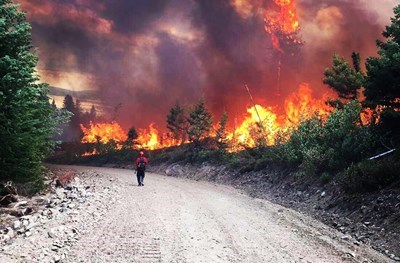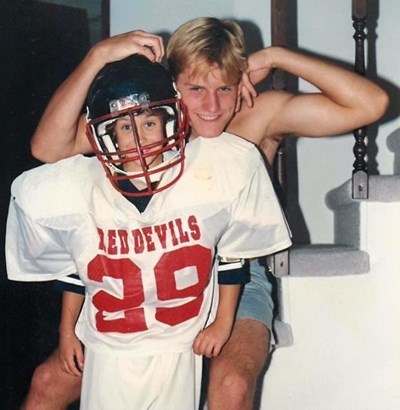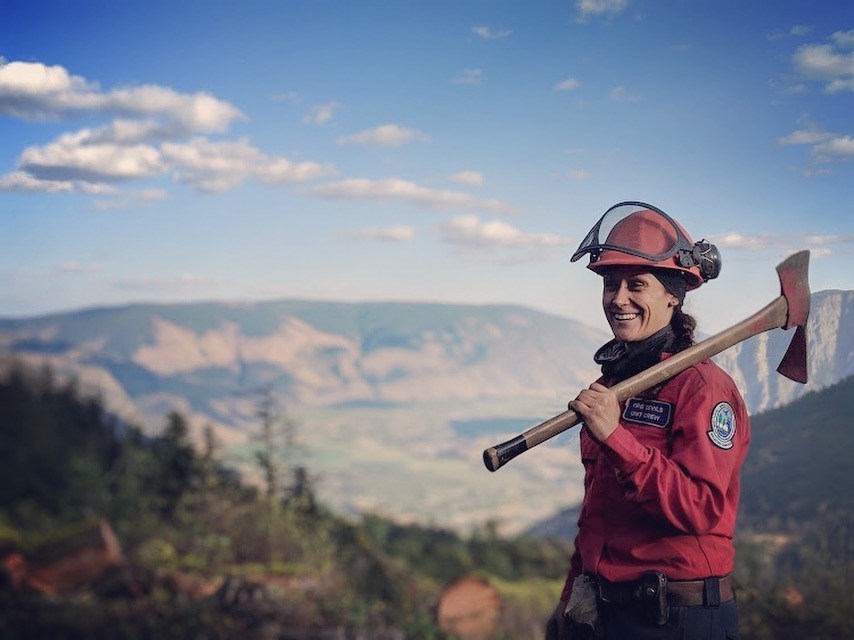Jennifer Seguin was just 19 years old when she joined the B.C. Wildfire Service (BCWS).
Having a “deep desire” to be outside and having played sports all her life (at one point, she was on three soccer teams all at once), working as a forestry firefighter seemed like the perfect fit.
“I love trees and just being in a team environment,” she tells KamloopsMatters.
Seguin’s late brother, Christopher, was also a big cheerleader of hers.

“He encouraged me to be tough and have the courage to push myself in various ways. He and my parents have helped me develop the skills needed to be an effective team member with BCWS,” she says. “I do miss my brother greatly.”
On Sept. 14, Seguin wrapped up her eighth season with BCWS.
Seguin was part of a 20-person unit crew in Merritt this summer. She also filled in on a three-person initial attack crew. (The former can be called out to anywhere across the province, and the latter usually stays in a prescribed zone.)
Some of the fires Seguin actioned included infernos in Peachland, Monte Creek, Clearwater and right here at home, when the Shuswap Road fire broke out.
“It’s really meaningful work, so knowing you’re going to serve that kind of purpose provides you with a level of excitement,” she says.
A deployment can last up to two weeks, meaning crews can be working for 14 days straight for up to 12 to 16 hours a day. They then get three or four days off before doing it all over again.
Depending on what resources are available, BCWS will set up fire camps, complete with wash trailers, a kitchen trailer and an area to sit down and have a meal.
Seguin recalls her time at a camp in Keremeos. She’d get up at 5 a.m. to avoid the lineups for breakfast, and have her pick of eggs, toast, pancakes, waffles, French toast, oatmeal and cereal. (Seguin says she loved the camp food.)
By 6 a.m., she and her crew would be en route to the “fire staging area.”

“Once you get there, you basically figure out what the objectives (for the day) are, what work needs to be done,” she says. “You go through safety procedures, safety expectations … communication, what the weather’s looking like. You talk about everything that could be of risk or could make your job a little more difficult.”
Then it’s down to work. Sometimes that’s digging hand guards; sometimes that’s establishing a hose lay or conducting a back burn.
“Other days, it’s taking gear off the hill and doing a patrol and making sure there are no hot spots,” says Seguin.
Some of the challenges on the frontlines revolve around Mother Nature. She can often throw a few curveballs.
“If the weather is really hot and you’ve got a good wind coming around, and you’re on a steep slope, you have to be very situationally aware,” says the cross-fit enthusiast. “You’re pushing your body in various ways to get the job done, whether you’re passing gear up, carrying a chainsaw and doing falling, or digging a hand guard up hill. Sometimes you’re working around swamps and your feet are getting wet and you’re walking around in wet boots for the rest of the day.”
Being without amenities many of us take for granted (like hot water) can be challenging too, says Seguin.
“We’re not always in a fire camp; sometimes you’ll be camping and you’re without service and pretty much off the grid. You lose touch with your family, you don’t have access to what’s happening in the real world.”
If you’re in the bush like that, Seguin says when it comes to things like personal hygiene, you have to be creative.
“For some people, that was running into the lake and having a wash there. For other people, they’re wiping down with wet wipes,” she explains.
It’s important to stay hydrated, she adds, as it can get “smoking hot.”

When crews were called out to the Shuswap Road fire, Seguin remembers some of her teammates bringing lots of Gatorade. Some even packed at least 14 500 mL water bottles.
“When you’re in the zone and working really hard, you don’t really stop to think about the heat,” she says. “You kind of take refuge when you can, maybe pour a bottle of water on your head to ensure you’re staying hydrated.”
Looking back on her firefighting career, Seguin says she’s gained so many practical skills and a whole lot of confidence.
“It’s been a place where I can safely exert myself, and challenge myself through hard physical labour and teamwork.
“Often, there can be multiple ways in tackling a fire and its various related components, and having a diversity of people to work with has not only broadened my perspective generally but also provided me with friendships that will last a lifetime,” she says.
Right now, Seguin is looking for employment in social work, having recently completed a master’s degree in social work at UBCO in Kelowna. (She graduated on June 21 and started with BCWS on June 25).
“I’m passionate about advocacy for positive growth and social justice at various levels,” she says, pointing to her work with The Children’s Foundation in Vancouver.
“There’s some crossover with (firefighting).
“You go to a fire and your adrenaline is pumping. You’re thinking about how to problem solve it and, sometimes with families and youth, it’s the same thing. How can we help this family feel safe? How can you provide them with the steps forward to have healthy and better outcomes that meet their goals and desires?”
The Kamloops native isn’t sure if she’ll return for another season with BCWS.
“Honestly, I’m not even going to give a definitive answer on that. I thought a couple seasons ago would be my last and I’ve always returned,” she says with a laugh.


